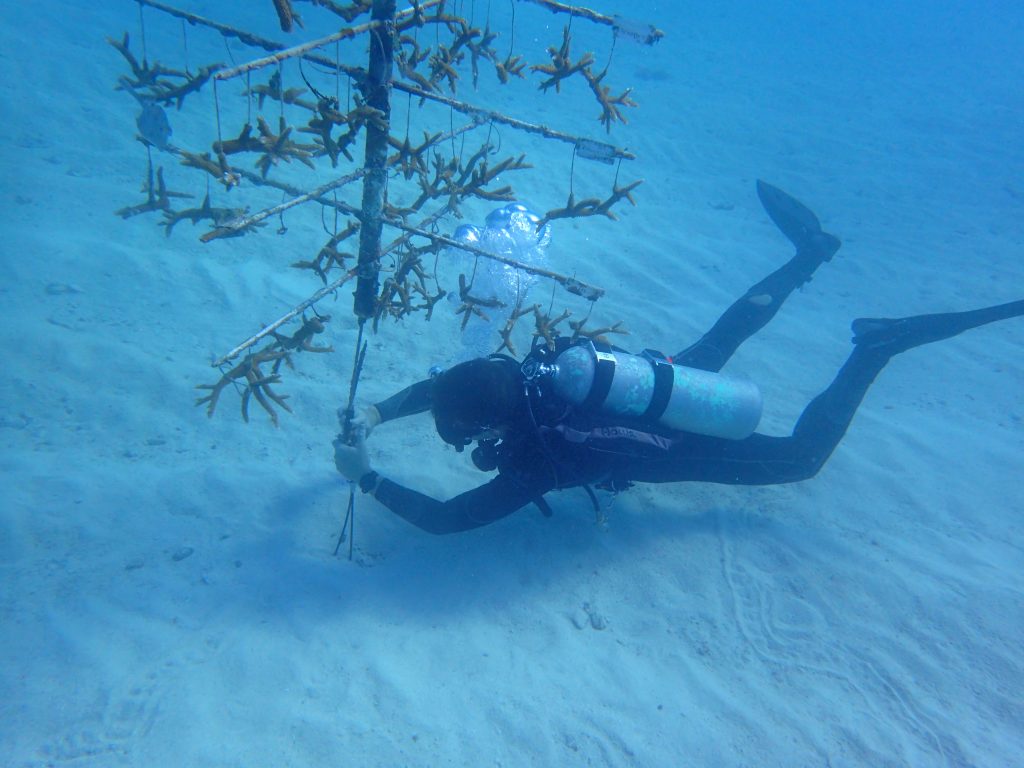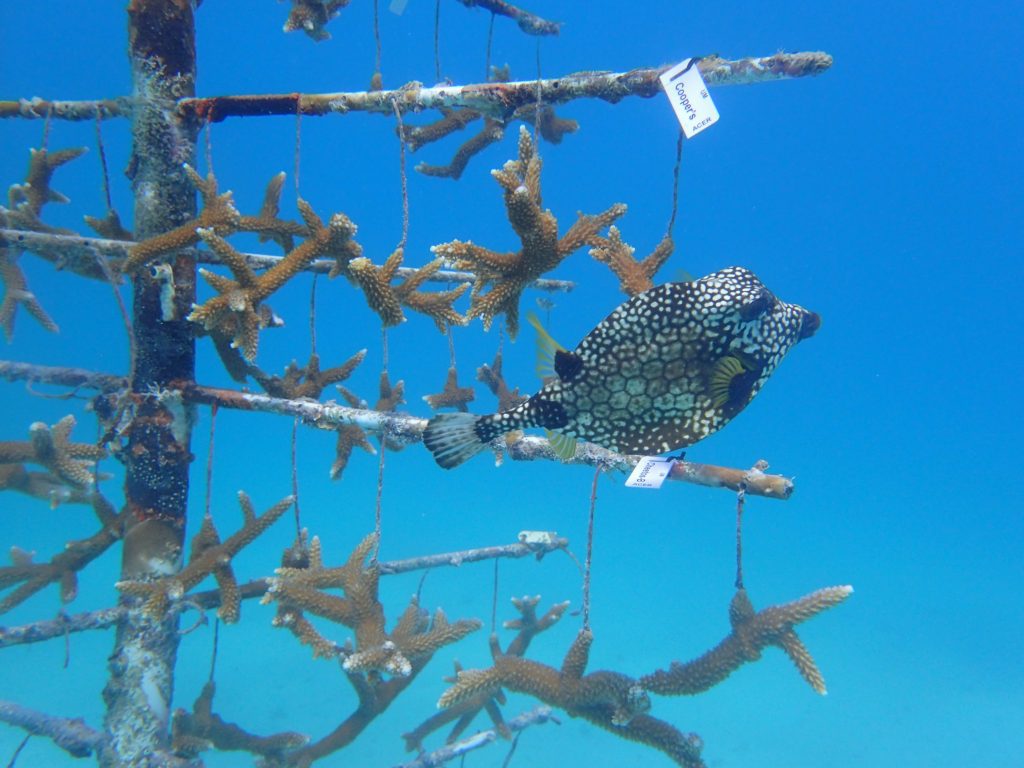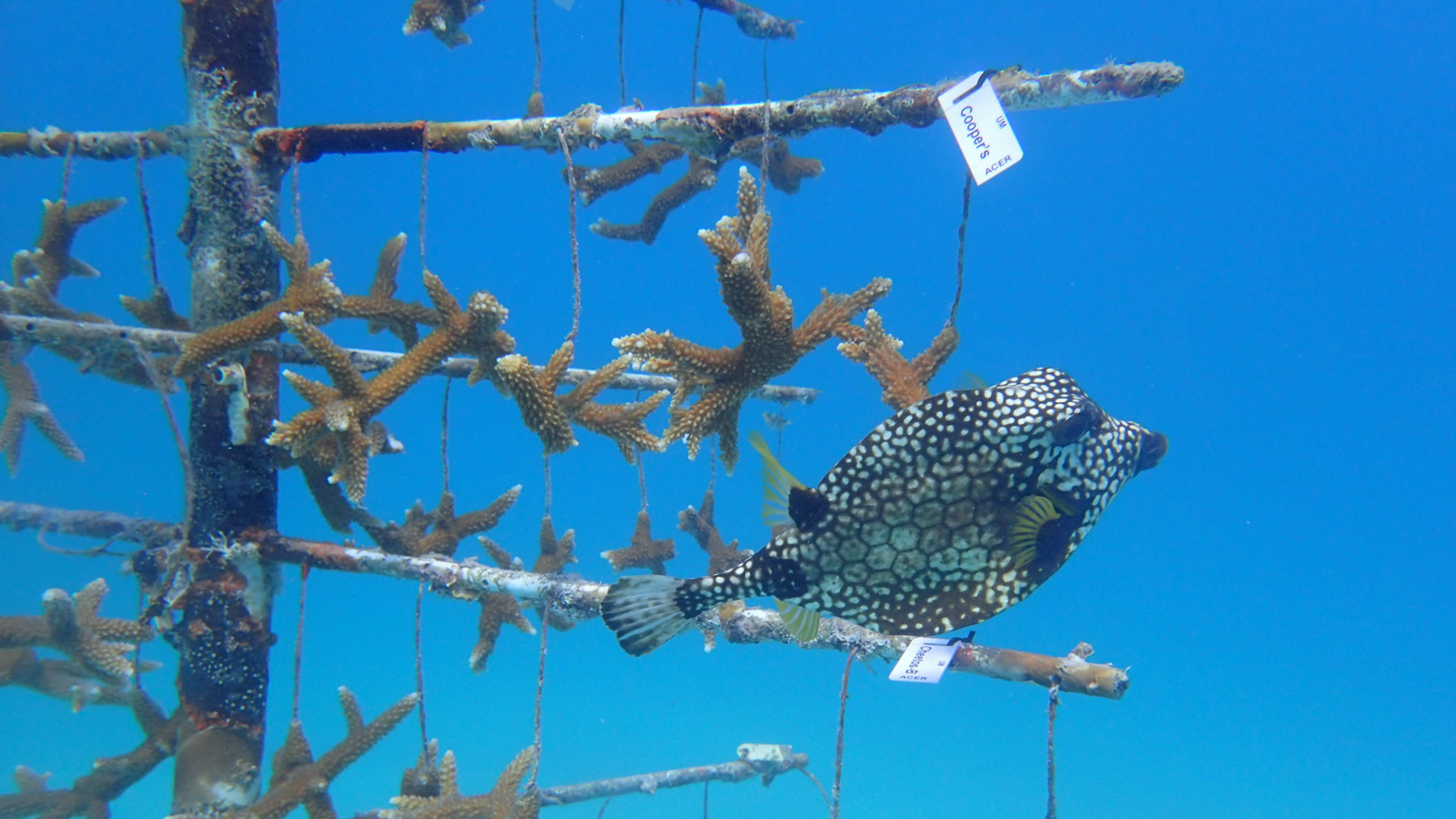In collaboration with the Lirman Lab at the University of Miami (UM), NOAA Atlantic Oceanographic and Meteorological Laboratory’s (AOML) Coral Program now has its own coral nursery tree!
This special coral tree will be kept and maintained within a coral nursery off Key Biscayne, with its primary role being to provide a consistent coral supply for various experiments being conducted at the AOML/UM Experimental Reef Laboratory. For AOML to have its very own supply of naturally grown corals will greatly enhance the research capabilities of our Coral Program scientists.

Photo Credit: AOML/Katherine Eaton
The AOML coral tree has several different genotypes (i.e. similar individuals with slightly different genetic makeup) of the species Acropora cervicornis, also known as staghorn coral. This species is a hard coral, the primary species of reef-building corals. The hard calcium carbonate skeletons of staghorn corals help to create the main foundation of a reef, which is an important job!

Photo Credit: AOML/NOAA/Katherine Eaton
One of the main research goals of AOML scientists is to learn more about how these genotypes respond to environmental stressors such as ocean warming or ocean acidification.. Our partners at the University of Miami’s Lirman Lab then use this information to conduct thoughtful coral restoration and outplanting. As the threats to corals become more prominent in the years to come, scientists can begin to identify how different genotypes respond to these varying conditions. Perhaps there are certain genotypes that are more resilient or less resilient under stressful conditions, which is something important to consider when engaging in coral restoration projects.
